MLB draft expert Eric Longenhagen will provide pick-by-pick analysis of the opening round of the 2016 MLB draft, as well as the compensation picks and the competitive balance round.
Before diving into the analysis, here are some notes and helpful links related to the draft:
• Feel free to follow along, using our draft tracker and refer to Keith Law's final mock draft. For all our draft analysis, go to our 2016 draft page.
• All players' names link out to more in-depth scouting reports of that guy (written by Longenhagen).
• We use the 20-80 grading scale for all MLB prospects.
Let's get to the picks! We'll be updating this file as the draft rolls on, adding the picks to the bottom of the file:
 1.Mickey Moniak, OF
1.Mickey Moniak, OF
La Costa Canyon HS (Carlsbad, California)
Big Board rank: 5
The Phillies selected California prep outfielder Mickey Moniak. He's the best pure hitter in the draft, eliciting some future 70 scouting grades with his bat. His swing is fluid and compact, and Moniak shows some elite hitting traits in the way he adjusts to pitches mid-flight. While not a track star, Moniak runs well enough to stay in center field and has a good feel for the position.
Moniak doesn't have a frame that projects for much power, but the combination of elite hitting potential and the ability to play a premium defensive position makes him a potential All-Star. While any player selected with the first pick overall could sign for an underslot deal, Moniak probably will sign for a bigger discount than other alternatives, giving the Phillies a lot of financial flexibility at their next pick (42nd overall).
 2. Nick Senzel, 3B
2. Nick Senzel, 3B
Tennessee
Big Board rank: 8
Senzel is the most advanced college hitter in the draft. He has outstanding barrel control and natural strength in his hands, which allows him to punish pitches in all parts of the hitting zone. While he'll show plus power in batting practice, the game swing is more geared for contact, and he might never hit for more than average game power. With an adjustment or two, more may come. His defense at third base has been inconsistent, but we've seen good athletes -- which Senzel is -- develop good gloves at third base later than players at other positions. Senzel is an above-average runner, and some want to see him get a look at second base.
While I think Senzel will turn into only an average everyday player, possibly above-average in his peak years, he's as low-risk an investment as there is in the draft, and should be one of this draft's quickest movers.
 3. Ian Anderson, RHP
3. Ian Anderson, RHP
Shenendehowa HS (Clifton Park, New York)
Big Board rank: 7
And the games have begun! This is going to be a heavy underslot deal for Atlanta -- probably around $3.2 million, while the pick's slot is roughly $6.5 million -- which means they're going to try to move a high-profile prospect, possibly Matt Manning or Jason Groome, back to their second pick at 40th overall. This is risky if a team like the Padres, Reds or even the Dodgers decide they have enough money to pay whomever the Braves are targeting. Teams can also just draft Atlanta's targets and dare them to go to college.
Anderson is good, and he had a potential home with the Red Sox at the 12th pick and likely wasn’t getting past the Yankees at 18. He'll flash three plus pitches and creep into the mid-90s with his fastball. Anderson was under-scouted this spring because of bad weather in his area and an illness he battled.
 4. Riley Pint, RHP
4. Riley Pint, RHP
St. Thomas Aquinas HS (Overland Park, Kansas)
Big Board rank: 12
Pint is quite possibly the hardest-throwing high-schooler of all time, touching 102 mph in workouts and sitting in the mid- to upper-90s this spring. There are those who fear what that kind of velocity might do to Pint's arm over time, but his arm works well now, and he has as impressive a physique as any prospect in the draft. While his secondary pitches are inconsistent, he'll flash a plus slider and changeup and can vary the shape of his breaking ball. There's some violence from Pint's head during his delivery, which might impact his command and force him to the bullpen if he can't throw enough strikes.
For Colorado, this is the kind of high-upside arm they can't find on the free-agent market, and given that Pint doesn't rely on a curveball like many of his prep peers, he's one guy who fits as well in Coors Field as any young pitcher they'd take.
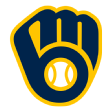 5. Corey Ray, OF
5. Corey Ray, OF
Louisville
Big Board rank: 1
The Brewers selected the No. 1 on Keith Law's Big Board. He has performed reliably throughout his entire career at Louisville and with Team USA, laying waste to opposing pitching. His bat enters the hitting zone at lightning speed, and Ray can get to pitches in every part of the strike zone, albeit with varying degrees of authority. He runs well, but likely will move to an outfield corner, where he could be a plus defender.
I'm skeptical about the amount of game power Ray will have -- I think he tops out at around 15 homers a season -- and while that doesn't sound great from a corner outfielder, the overall package here is so solid that this is still great value at No. 5 in this draft. Ray projects as an above-average everyday player.
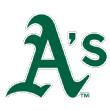 6. A.J. Puk, LHP
6. A.J. Puk, LHP
Florida
Big Board rank: 4
Puk is the consensus best college arm in the draft. He's built like a human crane -- 6-foot-7, 230 pounds, long limbs – and will touch 97 mph while pumping in a plus slider in the mid-80s. He has been wildly inconsistent this season, with strike-throwing and stamina issues comprising his primary warts. Not everyone is sold on him as an athlete, and many are concerned about how the body will develop. Others are entranced by what could be if Puk gets in shape and tightens up his mechanics.
Players built like Puk often blossom late because it takes them a while to learn to control their bodies. If that applies to Puk, he has top-of-the-rotation potential. I'm not as big a Puk fan as others in the industry, but this is great value for Oakland at No. 6.
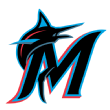 7. Braxton Garrett, LHP
7. Braxton Garrett, LHP
Florence (Alabama) HS
Big Board rank: 3
Garrett has the second-best breaking ball among high school lefties in this draft -- a 12-to-6 hammer in the 76-80 mph range -- and it projects to plus. He'll sit in the upper-80s with his fastball but touch as high as 94, and has significantly improved his delivery over the past year. He repeats it well, throws strikes and is athletic enough to project a solid-average changeup at maturity.
That's a mid-rotation package, and possibly more if he adds velocity and the changeup exceeds most projections. It's a solid selection, especially given that Jason Groome has reportedly been off Miami's board because of makeup issues.
 8. Cal Quantrill, RHP
8. Cal Quantrill, RHP
Stanford
Big Board rank: 23
The Padres dropped a huge bomb here by selecting Quantrill, who didn't pitch this season while recovering from Tommy John surgery. Quantrill was a candidate for the top overall selection coming into the season (if he would have pitched and looked good), and he topped out at 94-95 mph with a plus changeup when healthy.
Quantrill's absence from the Stanford rotation this spring, even though he reportedly was throwing and healthy, fueled fire that he had a deal with someone, and it appears so. The Padres have two more picks at 24 and 25 but it's hard to know what kind of bonus Quantrill has agreed to and how it will impact what San Diego does next.
 9. Matt Manning, RHP
9. Matt Manning, RHP
Sheldon HS (Sacramento, California)
Big Board rank: 9
The Tigers love hard-throwing prep arms, and the ultra-athletic Manning fits that mold. He's committed to Loyola Marymount to play both baseball and basketball, and there were pre-draft rumors that his bonus demands might price him out of range of teams without fat bonus pools.
Manning will touch 97 with his fastball and flash a plus breaking ball. This is the platonic ideal of a high-upside pitching prospect; he's dripping with athleticism and big-time velocity, with feel for spinning the ball. The developmental road for Manning probably will be long, but he has big-time upside, and the Tigers have a history of developing players like this.
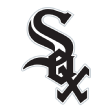 10. Zack Collins, C
10. Zack Collins, C
Miami
Big Board rank: 18
Collins has the most advanced approach in the draft, with what some scouts consider to be major league-ready strike zone awareness and pitch recognition already. He also has above-average raw power. However, some scouts are concerned he is going to strike out a lot, given the excessive movement in the way he loads his hands. It's also hard to find evaluators who think he remains at catcher; they think a move to first base is very likely.
While the White Sox might be looking at a first base-only prospect with a grade-45 hit tool and grade-55 power tool, the approach is the trump card, and Collins is a high-probability big leaguer despite a lackluster on-paper profile. Collins was in to work out for Milwaukee, who picked at No. 5, and there has been buzz on him as a candidate for an underslot deal in the same way Kyle Schwarber was an underslot deal a few years ago, though pick 10 could be a little late for an underslot deal.
 11. Kyle Lewis, OF
11. Kyle Lewis, OF
Mercer
Big Board rank: 10
Lewis has a monster ceiling and is great value at 11 for the Mariners. He projects to have 25-plus home run power at maturity and has a chance to stay in center field. Though he'll post only fringe-average run times from home to first, he kicks into a breathtaking second gear halfway down the line, and probably has the long, straight-line speed to remain in center field, even if he's only an acceptable defender there. Scouts are concerned about how noisy the swing is, and they wonder if Lewis will be able to sustain the amount of contact he made in college.
Given his power projection, Lewis probably needs to either stay in center field or actualize his power projection to be a valuable big leaguer. If he does both, he's a star.
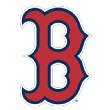 12. Jason Groome, LHP
12. Jason Groome, LHP
Barnegat (New Jersey) HS
Big Board rank: 2
I believe Groome is the most talented player in the entire draft. He has a prototypical major league innings-eater's build, a graceful, repeatable delivery and exceptional athleticism. He has been into the mid-90s with his fastball and has one of the better curveballs I've ever seen from a high school player. The curve projects to plus or better, and there's enough athleticism and a clean enough arm action that scouts can project an above-average changeup and command as well.
That's a front-end starter's profile. Groome has fallen this far because high school pitchers are inherently risky and because teams are concerned about his makeup. But this is great value for the Red Sox if they can convince him to sign. Slot value here at 12 is about $3.2 million, and Groome has been rumored to be asking for more than that. Previously committed to Vanderbilt, Groome recommitted to Chipola Junior College this week to give himself an option to re-enter the draft next year. But given that next year's draft has more talent than this one, it might behoove Groome to sign or risk being taken lower next year.
 13. Josh Lowe, 3B/RHP
13. Josh Lowe, 3B/RHP
Pope HS (Marietta, Georgia)
Big Board rank: 26
Lowe's tools are loud, and though he's a developmental project, he's a potential star the likes of which the Rays can't buy via free agency and need to develop to compete. Lowe will touch 95 off the mound, and his arm strength is an asset at third base as well, where he'll start in pro ball. He has monster raw power projection -- some have a future 70 grade on it -- but given his swing, it's unlikely that he hits for that kind of power in games. He is a plus runner, and some scouts like him in center field because they don't think he has the hands or footwork for the infield.
 14. Will Benson, OF
14. Will Benson, OF
The Westminster Schools (Atlanta)
Big Board rank: 41
Benson was one of the players rumored to be a tough sign as we approached the draft. Benson is committed to Duke and reportedly got a call from basketball coach Mike Krzyzewski offering him the chance to walk on to the basketball team should he go to school.
Benson's swing is a mess, but he has shown the ability to make some adjustments over the past year, and the hope is that eventually he'll find the stroke that works for him. If he does, the offensive potential here is substantial. Benson has plus raw power and enough life in his hands to be an above-average hitter one day if he can iron out his mechanical ills.
 15. Alex Kirilloff, OF
15. Alex Kirilloff, OF
Plum HS (Pittsburgh)
Big Board rank: 19
Kiriloff put on an absolute show during the Perfect Game All-American Home Run Derby in San Diego last year and has one of the most majestic-looking swings in the draft. It can get a bit long in the back, and hitters with swings like that often struggle to catch up to velocity on the inner half, but Kiriloff has shown freak innate timing against fastballs from the better prep arms in the class, which has quelled some concern. He has a plus arm, but his footwork around the bag at first base is so good and his hands are so soft that many argue that he should stay at first, where he can be a grade-70 defender there.
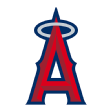 16. Matt Thaiss, C
16. Matt Thaiss, C
Virginia
Big Board rank: 21
There was some buzz on Thaiss as high as pick 12, but he was taken at No. 16 instead. Thaiss is an analytical darling. He struck out just 16 times in 271 plate appearances this year, and strikeout rate is one of the most reliable statistics by which to project college hitters. Thaiss has a simple, compact swing that lacks big power, in part because of how wide his base starts and remains at contact. He's not a good defensive catcher and projects to move to left field.
Unless the Angels can coax more power out of him, I find Thaiss' profile underwhelming and had a second-round grade on him.
 17. Forrest Whitley, RHP
17. Forrest Whitley, RHP
Alamo Heights HS (San Antonio)
Big Board rank: 13
Whitley looked good on the showcase circuit last summer until he overthrew at the Under Armour game in Chicago and raised some questions about his ultimate strike-throwing ability. He came into this spring having undergone a significant physical makeover and has looked tremendous. Whitley will touch 96 mph and flash a plus curveball, with feel for a changeup and a slider. If he can maintain a direct line to the plate with his goliath frame, he'll fill up the strike zone and be a ground ball and strikeout machine.
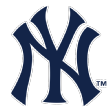 18. Blake Rutherford, OF
18. Blake Rutherford, OF
Chaminade College Prep (West Hills, California)
Big Board rank: 6
Rutherford was a great value pick all the way back at 18, but it's hard to say how signable he is. Look for the Yankees to go under slot with their next pick at 62. If they do, it's a sign that they've exchanged figures with Rutherford's camp and feel they can get a deal done. Rutherford has the best combination of hit and power tools among the prep bats in the class. While I have some concern about the condition of his shoulder and feel that his arm will eventually relegate him to left field, he has enough offensive potential to comfortably profile at any position.
 19. Justin Dunn, RHP
19. Justin Dunn, RHP
Boston College
Big Board rank: 14
Dunn began the season in Boston College's bullpen, but his stuff was too electric to keep out of the Eagles' rotation. He'll touch 98 with a plus slider and has some changeup feel. There are a number of external factors that make Dunn more projectable than other college arms. He's very athletic, has fewer miles on his arm and thus fewer reps because he has pitched for a school in the Northeast and out of the bullpen.
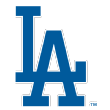 20. Gavin Lux, SS
20. Gavin Lux, SS
Indian Trail Academy (Kenosha, Wisconsin)
Big Board rank: 29
Lux is the draft's second-best shortstop prospect and is one of maybe three or four who have a real hope of remaining there in pro ball; his defensive actions and footwork are tremendous, and the arm is just fine for short. Last summer, Lux looked like a glove-only prospect who lacked the physicality to do any damage with the bat in pro ball, but he has gotten stronger, and scouts are now more confident he'll hit enough to play every day.
 21. T.J. Zeuch, RHP
21. T.J. Zeuch, RHP
Pittsburgh
Big Board rank: 38
Zeuch's fastball will sit 90-94 mph with two breaking balls of varying quality and a below-average changeup. His fastball plays up because of his downhill plane, and the pitch has some sink to it. Zeuch has had some command issues, and the breaking balls are inconsistent because of Zeuch's inconsistent release of them.
While he's a bit more of a developmental project than the typical college arm -- he needs to not only iron out those two breaking balls but also learn how to get lefties out with them, because the changeup isn't good -- there's a bit more upside as well. Zeuch profiles as an inning-eating back-end starter who lives off of generating weak contact.
 22. Will Craig, 1B
22. Will Craig, 1B
Wake Forest
Big Board rank: 45
Craig was seen as one of the more advanced college bats in the draft and (obviously) good enough to merit first-round consideration, even if he was a first base/DH-only hitter. He was announced as a pitcher, and indeed Craig has pitched in college and has been up to 94 mph with an average curveball, but I still believe Craig's future is with the bat.
 23. Delvin Perez, SS
23. Delvin Perez, SS
International Baseball Academy (Puerto Rico)
Big Board rank: 15
The Cardinals, bastions of righteousness and "The Cardinal Way," drafted Perez, who was being seriously considered at picks 2 and 5 before he failed his pre-draft drug test (he tested positive for a PED). He is one of the most explosive players in the draft, a 70 runner with no-doubt shortstop actions. He could be a plus-plus defender there and has enough feel to hit and bat control right now that he may grow into strong contact and power as he physically matures.
While risky, Perez is a potential star, the likes of which is nearly impossible to find this late in the draft.
Supplemental picks
 24. Hudson Sanchez, 3B
24. Hudson Sanchez, 3B
Southlake (Texas) Carroll HS
Big Board rank: 84
Sanchez has terrific defensive footwork and hands, and enough arm to play the left side of the infield. Currently a shortstop, Sanchez projects better at third base, where he could be a plus defender. Offensively, Sanchez's profile is a bit more difficult to decipher. His swing is fine, but he lacks loose, strong wrists, and the quality of his contact has been inconsistent. Sanchez should develop physically and add some power, and perhaps with that physical maturity, some more bat control will come as well.
 25. Eric Lauer, LHP
25. Eric Lauer, LHP
Kent State
Big Board rank: 50
Another college arm here for San Diego in Lauer, posted a nice 0.69 ERA for Kent State this year. Lauer will touch 92 and has an above-average mid-80s slider. His curveball and changeup are a bit behind, but both are viable change-of-pace options as well. He projects as a back-end starter in the bigs.
 26. Zack Burdi, RHP
26. Zack Burdi, RHP
Louisville
Big Board rank: 37
The White Sox's draft has yielded two of the most big league-ready prospects available in Burdi and Zack Collins. Burdi can hit triple digits with his fastball, with movement on the pitch, and his slider is consistently plus. He did pitch in relief at Louisville, but many teams think he can start. Given how high the White Sox just drafted him, it's likely they fall into that camp.
 27. Cody Sedlock, RHP
27. Cody Sedlock, RHP
Illinois
Big Board rank: 17
Sedlock spent much of his career at Illinois in the bullpen, but he has held his stuff deep into games as a starter. Part of that is undoubtedly thanks to his terrific pitcher's build and efficient mechanics. Sedlock will touch 95 mph and sits 91-93 with an above-average slider and average curveball. The changeup is behind, but Sedlock's days as a reliever didn't give him many in-game opportunities to work on the pitch, and it likely will be a priority for the Orioles once they get a hold of him.
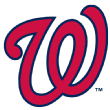 28. Carter Kieboom, 3B
28. Carter Kieboom, 3B
Walton HS (Marietta, Georgia)
Big Board rank: 27
Kieboom has solid across-the-board tools. He doesn't quite run well enough to play shortstop, but he should be a solid-average third baseman defensively, with an above-average arm. Offensively, Kieboom has a quiet, mature approach to hitting but lacks explosion and big bat speed. He should settle in as an average hitter with average power, giving him the profile of a solid regular.
 29. Dane Dunning, RHP
29. Dane Dunning, RHP
Florida
Big Board rank: 25
Dunning has looked spectacular late this season and absolutely merits first-round consideration despite pitching out of Florida's bullpen for much of this year. Dunning has been throwing in the mid-90s of late, with sink, and has been dominating with a plus slider in the mid-80s that features more downward break than is typical for a pitch that hard. He has the physicality and strike-throwing ability to start in pro ball and thus will likely be developed as a starter.
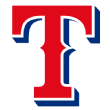 30. Cole Ragans, LHP
30. Cole Ragans, LHP
North Fla. Christian (Tallahassee, Florida)
Big Board rank: 55
Everything Ragans does is solid. He'll sit 89-93 with his fastball and flash an above-average breaking ball and changeup. His delivery is easy, though the arm swing is a bit long, and he projects to throw enough strikes to remain a starter. Without a swing-and-miss pitch, Ragans probably won't be more than a back-end starter, but given the ease of his delivery and his physical build, he could provide a ton of value simply by racking up innings in a big league rotation.
 31. Anthony Kay, LHP
31. Anthony Kay, LHP
Connecticut
Big Board rank: 28
Kay is small, but he's an absolute bulldog. He also has seen an uptick in velocity this year and has one of the best changeups in the entire draft. He's a Long Island kid -- make sure you really hit that "g," folks -- and went to the same high school as Steven Matz. Given the kind of effort it takes someone Kay's size to throw a baseball as hard as he does, there's a possibility he ends up in a bullpen even though he has a starter's repertoire. There also has been some recent concern about how UConn used him this postseason.
 32. Will Smith, C
32. Will Smith, C
Louisville
Big Board rank: 59
Smith was a late riser because of his incredible athleticism and slam-dunk ability to catch. He's an above-average runner with terrific movement skills behind the plate, and his bat has outpaced the projections scouts had placed on him coming into the year. The Dodgers have drafted two players who very strongly project to play premium defensive positions, and while neither of them has impact offensive profiles, I like what they're doing. And they pick again at 36.
 33. Dylan Carlson, 1B
33. Dylan Carlson, 1B
Elk Grove (California) HS
Big Board rank: 100
Carlson has plus power from both sides of the plate thanks to his impressive use of his lower half. He also has terrific makeup and enough athleticism to play right field. On the mound, he has been up to 90 mph, and that arm will play just fine in right field.
 34. Dakota Hudson, RHP
34. Dakota Hudson, RHP
Mississippi State
Big Board rank: 20
Hudson has fallen far enough on draft boards of late that it's fair to wonder whether there's something going on with his medical reports. I think he's the second-best college arm in the class behind Puk, and when I saw him early this spring, he was up to 96 with a plus-flashing cutter that was absolute death to left-handed hitters when located inside. Assuming good health, I think Hudson is a steal this late; he has mid-rotation potential.
Competitive balance round
 35. Taylor Trammell, OF
35. Taylor Trammell, OF
Mount Paran Christian (Kennesaw, Georgia)
Big Board rank: 44
High-upside pick here at 35 for the Reds; Trammell is an explosive prep athlete. The question here is the bat. Trammell is raw offensively and his swing can get long, but he has shown some ability to move the bat around the hitting zone, and that should improve as his frame matures. Trammell can fly -- he's a 70 runner on the scouting scale -- and is a potential 70 defender in center field.
 36. Jordan Sheffield, RHP
36. Jordan Sheffield, RHP
Vanderbilt
Big Board rank: 31
This is the second year in a row the Dodgers have taken a Vanderbilt righty who has had Tommy John surgery (it was Walker Buehler last year). Sheffield's stuff is electric, but his strike-throwing ability is not, and it's likely he'll end up as a reliever. Given his athleticism and how deep his repertoire is, I think there's a chance he can make it work as a starter, but I still consider it unlikely.
 37. Daulton Jeffries, RHP
37. Daulton Jeffries, RHP
California
Big Board rank: 74
Jeffries might have been the second college arm drafted had he not suffered a shoulder injury this spring. He'll sit in the mid-90s with a plus changeup when healthy, throws plenty of strikes and is a fiery competitor. Shoulder injuries are tricky, and it's possible that Jeffries never reclaims the stuff he showed early this spring. For the A's, however, the risk is worth Jeffries' potential upside, which is that of a third or fourth starter.
 38. Robert Tyler, RHP
38. Robert Tyler, RHP
Georgia
Big Board rank: 32
The Rockies again take a pitcher whose best secondary pitch is not a curveball. Tyler has a potential plus-plus changeup but very little feel for a spike curveball, which often flattens out and doesn't break. He throws hard but struggles to throw strikes and may end up in the bullpen.
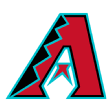 39. Anfernee Grier, OF
39. Anfernee Grier, OF
Auburn
Big Board rank: 40
Grier had some pretty serious helium early this spring, and had that continued, he would have been considered among the first 20 picks. Pitch recognition is an issue with him, and it became a bugaboo for Grier once SEC play began and he started facing better stuff. I like Grier, though. He has louder tools than is typical for a college player, projects to stay in center field and has above-average raw power projection. If he hits, not only is he a steal here, but he would have been a steal 15 picks before this.
 40. Joey Wentz, LHP
40. Joey Wentz, LHP
Shawnee Mission East HS (Prairie Village, Kansas)
Big Board rank: 22
The Braves have been linked with Wentz for a while now, and they had been tussling with Philadelphia for financial supremacy to land him. Wentz's stuff backed up as the spring went along, but when it's on, it's devastating. He'll touch 95 mph effortlessly and snap off a potential plus breaking ball. This is a massive, well-built athlete who spent last summer playing first base on the showcase circuit. This is a huge get for Atlanta, and when combined with their Ian Anderson pick, it makes for a terrific start to their draft.
 41. Nick Lodolo, LHP
41. Nick Lodolo, LHP
Damien HS (La Verne, California)
Big Board rank: 80
Lodolo is ultra-projectable at a smooth 6-foot-6, and his velocity has taken a step forward this year. He's graceful and athletic enough to favorably project his secondary pitches, but he still is a long-term developmental project.
